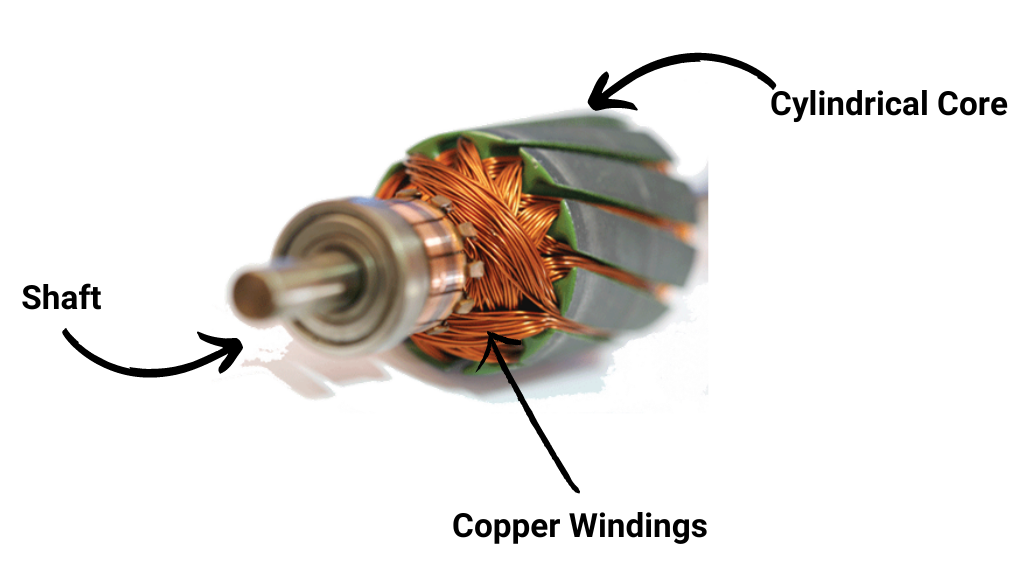Motor armatures
What is a Motor Armature?
Motor armatures are the rotating components of electric motors that generate the magnetic field necessary for the motor to operate. They are critical components of electric motors, and the quality and performance of the motor armature significantly impact the overall performance of the motor. Electric motors can be found in many everyday devices, including fans, toothbrushes, power tools, etc.
An electric motor combines two circuits, an electrical circuit and a magnetic circuit. Let's break down the two types of circuits and how they combine to create an electric motor:
- Electrical Circuit - an electrical circuit is a pathway through which electricity travels. The basic components of an electrical circuit are a power source like a battery and a conductive wire.
- Magnetic Circuit - a magnetic circuit is a pathway through which magnetic flux travels. Unlike an electrical circuit, a magnetic circuit is permanent, so it can't be switched on or off. This circuit is generated from a magnetic core's north and south poles.
In an electric motor, an electromagnet is created. When the wire of the electrical circuit is wrapped around a non-magnetic core, it forces that core to act as a magnet. Which means a magnetic field is generated. In the case of the motor armature, the wire wrapped around in combination with the core is what causes the motor to spin. When the electric current is turned on and passes through the wires, a torque is generated which causes the armature to move.

Applications
Motor armatures are used in various industries and applications, including:
Automotive Industry
Motor armatures are commonly used in the automotive industry, in applications such as electric vehicles (EVs), hybrid electric vehicles (HEVs), and other electrified vehicles. The high performance and reliability of motor armatures are critical to the overall performance of these vehicles, particularly in terms of power, efficiency, and range.
Robotics
Motor armatures are widely used in the robotics industry, where precise control and high-performance motors are essential. They are commonly used in industrial robots, service robots, and consumer robots, and their reliability and performance are critical to the success of these applications.
Aerospace and Defense
Motor armatures are used in a variety of aerospace and defense applications, including aircraft systems, unmanned aerial vehicles (UAVs), and other aerospace systems. They must be highly reliable and able to withstand harsh operating conditions, and their performance is critical to the success of these applications.
Medical Devices
Motor armatures are used in a variety of medical devices, such as surgical instruments, rehabilitation devices, and other medical equipment. Their precise control, high performance, and reliability are critical to the success of these applications.
Industrial Applications
Motor armatures are widely used in a variety of industrial applications, including conveyor systems, pumps, compressors, and other industrial machinery. They must be highly reliable and able to withstand harsh operating conditions, and their performance is critical to the success of these applications.
In conclusion, motor armatures are critical components of electric motors, and their quality and performance significantly impact the overall performance of the motor. They are widely used in a variety of applications, including the automotive industry, robotics, aerospace and defense, medical devices, and industrial applications. The benefits of motor armatures include their high-performance, reliability, and precise control, which are critical to the success of these applications.



